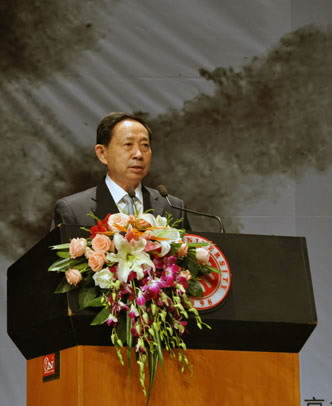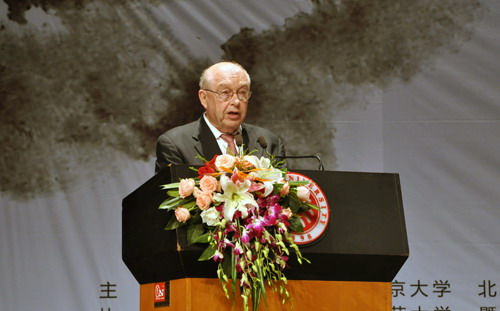Int'l Aesthetics Congress embraces cultural diversity
The 18th International Aesthetics Congress (IAC) opened at Peking University on August 9 with about 1,000 scholars from all over the world gathered to discuss the latest issues of aesthetics, philosophy, art and education with six general assemblies, 25 themed meetings and 108 group discussions from August 9 to 13.
|
 Minister of Education Yuan Guiren speaks at the opening ceremony of the 18th International Aesthetics Congress. |
The theme of this year’s congress is "Diversities of Aesthetics," which focuses on communication among different cultures. It reflects the latest trend of aesthetics under the context of a fast-changing world. The transition of the IAC from West to East marks a shift to aesthetics in Eastern cultures, such as China, Korea, and Japan, where the number of people studying aesthetics is high.
Curtis L. Carter, president of the International Association for Aesthetics, said the increased awareness of the importance of aesthetics across the world is evidence of the increased mutual interest among the scholars working in East and West, and this collaboration will have significant long-range effects on aesthetics in the future.
| ?
 Curtis L. Carter, president of the International Association for Aesthetics, speaks at the opening ceremony of the 18th International Aesthetics Congress. |
Yuan Guiren, Chinese minister of education, said the congress showed the great importance of art education in today’s society, that globalization requires respect for the diversity of cultures, and that this congress would contribute to building a more harmonious world.
"Art is a common subject shared by the whole human race. People with different cultural backgrounds can appreciate the same art," Yuan said.
He added that on a national level, aesthetics is essential because it has a long and significant history in China, so China hopes to cultivate more talents with creativity and originality.
"Confucius once argued that an integrated personality needed both knowledge and art," Yuan said. "Art is a fundamental element to stimulate people’s imagination ability and form."
During the congress there are a number of art shows and performances, such as contemporary Chinese oil paintings, African wood sculptures, ancient Chinese music, and a Chinese Kunqu opera.
The congress was first held in Berlin in 1913. After 1956, the congress was held every three years all over the world. Asia hosted for the first time in 2001 in Tokyo. Then it moved to Rio de Janeiro, Brazil, and Ankara, Turkey in 2004 and 2007 respectively. This is the first time for China to host.






















